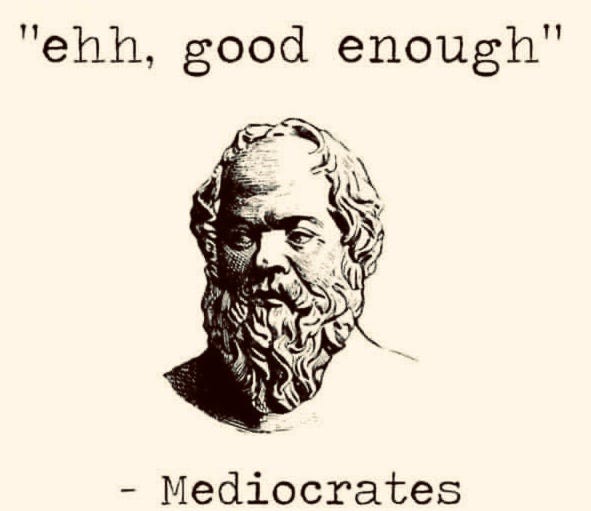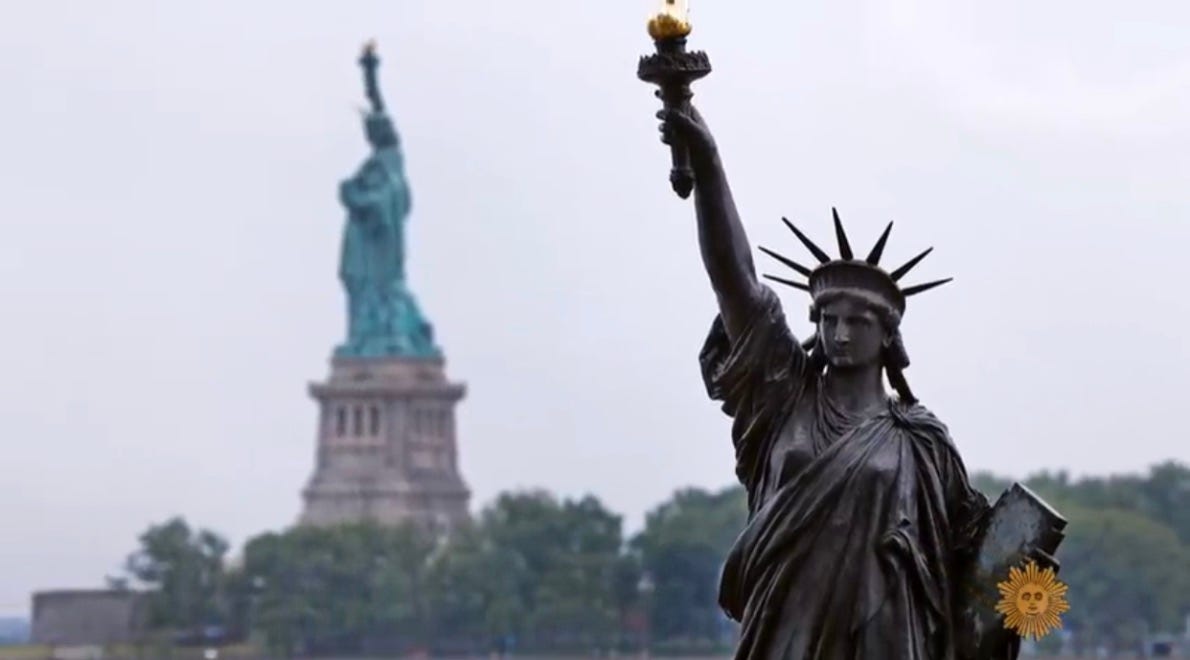Greetings and happy Bastille Day!
(Yes, that celebration of our long-ally France’s independence day was actually Wednesday, and so was writing of this week’s News Notebook. A lot of back-and-forth starts and delays complicate the domestic scene later in the week as we continue trying to inch my mom’s move forward.)
news updates and coming soon
Here are two good summary updates on national news and President Biden’s Voting Rights speech. From political historian Heather Cox Richardson and from smart, thorough lawyer Robert Hubbell (who writes with the fully owned goal of electing more Democrats at every level of government.)
Here are two stories we’ll revisit with others on psychological and mental health issues for athletes in elite sports:
Naomi Osaka’s first-person Time Magazine essay about the Tokyo Olympics and her personal struggles.
2 years after wanting to quit, Charlotte’s Anna Cockrell is an Olympian. Here’s how
I’ll return to discussion and your comments from the film Summer of Soul in a later newShrink once emotional bandwidth, attention span and stamina allow for deeper dives again.
Today is more like a meal of tapas appetizers.
A feature story unexpectedly pulled me back to thinking about “transcending” contradictory roles and positions to allow something larger and good to come to life. It’s about efforts to save endangered California condors—obligates that only eat things already dead—from lethal amounts of lead they ingest from hunters’ bullets in carcasses.
To me biologist Chris Parish of the Global Conservation Peregrine Foundation quietly nails what that “transcendent” or “capital-F Friend” psychological stance from recent posts might look and sound like. Without fanfare he calmly describes his mission through his North American Non-lead Partnership to convince hunters to change to more expensive non-lethal copper ammunition and not to leave bullet-holding carcass parts in the wild.
“I’m kind of a redneck hunter-biologist, and these hunters are my people. Changing tradition is hard, not as simple as here’s the science, here’s the logic.” Appealing to hunters’ shared larger conservation ethic and personal story rather than penalties and restrictions, the group is slowly changing behavior and has saved more than 500 of the giant, ancient species so far.
By contrast, my Bay-Area psychologist friend and former classmate shares a humorous take on the futility of a binary “my way or the highway” stance when individual or collective survival is at stake. In this Washington Post column Dana Milbank imagines President Joe Biden and Senate Minority Leader Mitch McConnell dropped into the wild alone—but in this case clothed “for good taste reasons”—on Naked and Afraid, the insanely popular 30-day survival-challenge reality TV show. (It’s on the Discovery Channel.) From my clinical psychotherapy experience I’ll add that this show is an astonishing paradoxical favorite with cult-like popularity among several patients who struggle mightily with chronic anxiety. No joke.
Some other themes from the past three or four posts just aren’t leaving me alone yet, either.
tapas bites

the week’s spontaneous song-lyrics and images
From the “how the psyche shows up” ear-worm playlist, last week’s hokey Stevie Wonder & friends with “That’s what friends are for” during my daily runs were now joined by similar best-friend-fare from Queen and Madonna.
Then for no obvious reason, before morning coffee or news came just the “….send these, the homeless tempest-tost to me” line (from the Emma Lazarus Statue of Liberty poem, “The New Colossus,” which my high school choir did as song decades ago.) The full poem is two interestingly contrasting stanzas I hadn’t noticed before. It’s in this week’s Postcards from the Field on the website.
Soon and often after Lazarus, Bob Dylan arrived combining these themes with “Shelter from the Storm.” (At last, I get one that’s a favorite.)
Suddenly I’m also seeing the mathematical symbol everywhere for pi, the “transcendent” number. (Of course it is.)
By this time I figure I’d best pay attention before dreary-droning hymns are next.
those statues…

Here “The Statue of Liberty’s Little Sister” story depicts France’s smaller replica gift to the US ‘symbolizing the enduring friendship between our two countries.’ It arrived in New York for our Independence Day before moving for a stay in Washington in time for French Bastille Day. (The video from CBS Sunday Morning July 4 is available via YouTube.)
Two news stories linked here from The New York Times highlight the “little sister statue” event and some re-evaluating of what the original and the replica really do and don’t represent.
Several of recent posts’ historic statues and images from both state and national contexts, plus the Abigail Adams letter elevating “Friend” in both personal and civic relations, turn out to be related symbolically. They have common traits of archetypal figures from myth, particularly Greek goddess Athena. They also bear this common theme of a “capital-F Friend”—something deeper, larger, and transcendent as with Jung’s “capital-S soul-Self (vs our lower-case ego-roles-self”).
It’s in many ways natural to think of the Greek Athene, Athena, as model for that “new colossus” Lady Liberty straddling worlds. Complete-in-herself Athena, goddess of wisdom, strategy and handcrafts, is friend and guide both to men and women regardless of their roles throughout the Odyssey, Iliad and other classical myth.
Like Athena, “Friend” as an archetype doesn’t have much of a tandem or paired-opposite but includes and welcomes many roles. Its closest tandem is probably something like “stranger,” “not yet known.”
By contrast, for “enemy” the tandem or opposite seems more like “ally,” one working toward common goals—as in “you’re either with me or against me.”
That’s the level at which most of our domestic and international politics operate. As described in previous posts, the binary either-or stance is a marker of psychological adolescence—and a lot of our red-blue public arena these days.
Especially in such deeply divisive times for politics and public discourse—as well as in navigating interpersonal and internal conflicts involving our various roles vs souls—“Friend” offers a transcendent-center psychological position or stance. It’s sort of a sturdy platform to stand on for engaging with and holding opposites without yo-yo reactivity back and forth or “falling in,” with flooding on the one hand or frozen lifeless detachment on the other.
This stance (or “psychological move” as therapists say) can apply similarly to our inevitable internal wrestlings over the course of adult lives.
Psychologist James Hillman proposed a simple yet powerful psychological shift that creates such a transcendent “Friend” stance (though he didn’t call it that) in both external life and internally when we engage consciously with the inevitably disruptive things our unconscious souls serve up. He suggests we routinely substitute “AND” for “but” (whether talking with others or wrestling with ourselves.) Then invite and allow what shows up to come to life and unfold.
About the opposites, I wrote in the June 25 edition on Jung’s core concept of the soul-engaged psychological transcendent function. That’s our capacity for holding the tension of paradox and opposites, enabling creation of that emerging new “third thing.” (This is classic thesis-antithesis-synthesis dialectics from Hegel, but applied also to dealing with our interior opposite wrestlings between soul and conscious self.) A refresher on definitions etc. is under Library for today’s date on the website. You also can always go directly from a browser to the website at newshrink.substack.com.
one more thing…
Just as I wind up writing on these themes, into my inbox comes this (public) invitation to a virtual conference via Zoom this fall at Retreat (the public program arm of my alma mater graduate school, Pacifica Graduate Institute.)
Especially with lack of travel expense reducing cost this is worth a look for any of us who are:
at, near, or already past one or more “retirements” of roles—so this distinction between roles we perform in life, and who and what we most deeply are about, really resonates;
among those of us who felt or were described as “old-souls when young/likely youthful in age;”
interested in the offerings of a strong slate of professors and presenters, several of whom I have studied with, know and cherish personally and others whose writing and work I follow.
The conference title rather elegantly suggests columnist-author David Brooks’ “resume-vs-eulogy,” as well as my “timeline-to-tapestry” deep biography, as approaches to life story. Here I’d prefer a broader, less age-specific conference focus than Elder (maybe even “Friend”!) In my experience these issues arise across the adult life span—in soul- or “kairos” time that loops-back and forward, not solely linear-chronological time. When they do, younger adults need and can benefit from this material, too.
The still-virtual venue prevents the full sensory and emotional animation of being in-person in the Pacifica space just outside Santa Barbara, CA. But perhaps for a next time you can imagine learning in this setting, a former Jesuit seminary high in Central Coast mountains with bluest Pacific Ocean visible miles away and below.
You can check it out here .
If all that’s too sweet or woo-woo to take in at the moment, as antidote there’s a contrasting take on maturity in Stephen Colbert’s Tuesday, 7.13, Late Show. It’s a raucous spoof video on the “heroic” competitive space ventures of aging billionaires Branson, Bezos and Musk. The video should be available soon on YouTube. (On the show this was before, not part of, the interview with Branson, which I didn’t catch.)
And, that is all I have! Talk to you next week
🦋💙tish
… it is important that awake people be awake,
or a breaking line may discourage them back to sleep;
the signals we give — yes or no, or maybe —
should be clear: the darkness around us is deep.
— William Stafford, “A Ritual to Read to Each Other”
https://www.nytimes.com/2021/06/10/us/second-statue-liberty-ellis-island.html?referringSource=articleShare
https://www.nytimes.com/2021/06/19/world/europe/france-statue-liberty-model.amp.html
https://www.washingtonpost.com/opinions/2021/07/09/mcconnell-biden-desert-island/
https://retreat.pacifica.edu/inner-work-of-age/
https://heathercoxrichardson.substack.com/p/july-13-2021?utm_campaign=post&utm_medium=email&utm_source=copy
https://roberthubbell.substack.com/?utm_campaign=pub&utm_medium=web&utm_source=copy
https://time.com/6077128/naomi-osaka-essay-tokyo-olympics/?utm_source=email&utm_medium=email&utm_campaign=email-share-article&utm-term=ideas_olympics
https://www.charlotteobserver.com/sports/article252688508.html
Bolen, J. S. (2003). Gods in everyman: Archetypes that shape men’s lives. Originally published 1989. New York, NY: Harper Collins.
Bolen, J. S. (2004). Goddesses in everywoman: Powerful archetypes in women’s lives.Twentieth Anniversary Edition. New York, NY: Harper Collins.
Downing, C. (2000). Goddesses: Mythological images of the feminine. Originally published 1981. New York, NY: Continuum.
Lule, J. (2001). Daily news, eternal stories: The mythological role of journalism. New York & London: The Guilford Press.
https://retreat.pacifica.edu/inner-work-of-age/?https%3A%2F%2Fretreat.pacifica.edu%2Finner-work-of-age%2F&fbclid=IwAR2_SeWmxoF6C1w1uL0euwyM5Kvg5E6aZE7smVWU9PSVZTWi_asr4AjTTgs_aem_Ad6ik_HQIeKlJ8LhaquZQc4lbH5ax1jzI_r-bdg8XeMX4np7DjTUBWEj_RYrOkLftEp_Jb-8mT16YH9CTwXp_jK1U2-m33o6msiX4bUhwR9lFG2ihzMBWHMSvVVzwNU3izk





